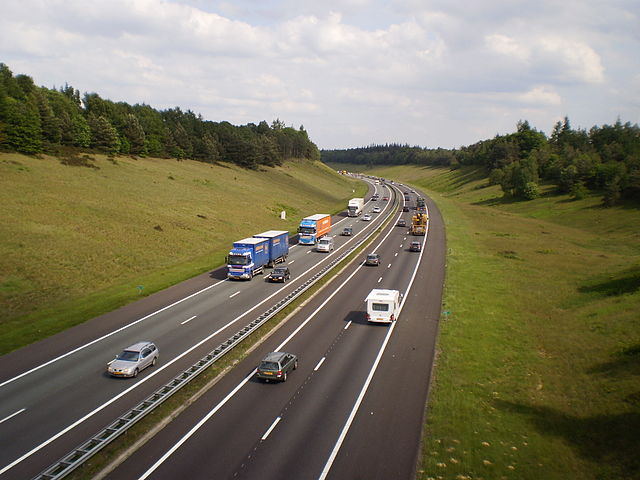Highway vs Motorway
The difference between a highway and a motorway can be observed in some aspects such as traffic conditions. Highways and motorways are terms used for different types of roads that facilitate faster and more efficient transportation of vehicles across significant cities in various countries. The term “motorway” is more commonly used in Britain than in other parts of the world. In Britain, motorways are numbered M1, M2, M3, and so on, connecting major destinations. Ireland has its own numbering system, different from England. Highways and motorways have many similarities, but there are also some differences, which will be highlighted in this article.
What is a Highway?
A highway is a generic term used to denote any paved road that has 2 to 4 lanes throughout, sometimes even more, and is utilized for high-speed traffic across major destinations. The inter-city feature is a distinguishing characteristic of a highway. A network of roads that have multiple lanes and connect different towns and cities with intersecting roads via stoplights is a system of highways in any country. Before WWI, there were few highways worldwide, but the rapid increase in the number of automobiles and the demand for better, more efficient road systems to transport between cities forced governments to develop highways. However, although highways are meant to be faster than regular roads, they tend to have more traffic than motorways, as highways have traffic signals and intersections.
What is a Motorway?
A motorway is almost always part of a network of highways in a country and connects two or more important cities. It allows for high-speed travel to your destination. Usually, a motorway has two lanes per side of the road and has tollgates, as motorways charge tolls. Additionally, traffic on a motorway is uninterrupted without traffic signals. This is possible because pedestrians are not allowed to travel on a motorway, and there are no intersections. Different countries use different numbering systems for motorways. England uses the M series to number their motorways, while in Australia, motorway numbering varies from state to state. Most states are now changing to the number system with the prefix M. In Germany, the federal motorway has the prefix A, while in the Netherlands, the motorway number can be obtained with the original national highway number but with the prefix A.
What is the difference between Highway and Motorway?
• Definition of Highway and Motorway:
• A highway is a general term that refers to a system of paved roads linking important cities to provide high-speed transportation of automobiles without any restriction.
• Motorway is a less popular term used mostly in Britain, where there is a system of highways connecting all cities in the country.
• Traffic:
Traffic is another point of differentiation between a highway and a motorway.
• Highways, compared to motorways, have more traffic as there are traffic signals and intersections.
• Motorways are controlled-access highways, which provide high-speed traffic without traffic signals, and access is provided through ramps and slip roads.
• Number of lanes:
• A highway may have 2 to 4 lanes throughout.
• A motorway usually has 2 lanes per side.
• Tollgates:
Both highways and motorways have tollgates, as they both charge tolls from travelers who use the road.
• Access:
• Highways can have controlled access or no control. If a highway has controlled access, only vehicles with certain qualities can travel on that road. Cyclists, pedestrians, and equestrians are not allowed to travel on these highways.
• Motorways are controlled-access highways. Cyclists, pedestrians, and equestrians are not allowed to travel on these motorways. Sometimes, in Britain, for the benefit of the users, roads that were converted to motorways are allowed to operate without the limited access requirement. This is for the benefit of the people who have been using that road even before it was turned into a motorway.
Key Takeaways
- Highways are generally faster than regular roads but tend to have more traffic than motorways, as they have traffic signals and intersections.
- Motorways are controlled-access highways, providing high-speed traffic without traffic signals, and access is provided through ramps and slip roads.
- Both highways and motorways have tollgates, charging tolls from travelers who use the road, but access restrictions vary between the two road types.
